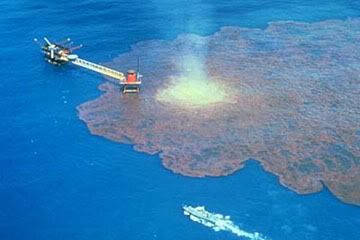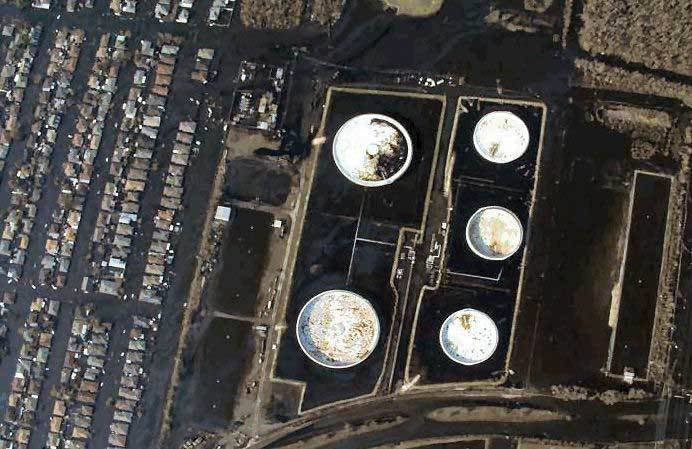Drilling deceptions
North Carolina is one of the last Southern states to still support the federal ban on new offshore oil drilling, but lifting that ban has now become an issue in the governor's race.
 This week, Republican nominee and Charlotte Mayor Pat McCrory (photo right) announced that he would issue an executive order allowing "safe, technologically sound" exploration and drilling -- and he criticized his Democratic opponent, Lt. Gov. Beverly Perdue, for her opposition to new drilling:
This week, Republican nominee and Charlotte Mayor Pat McCrory (photo right) announced that he would issue an executive order allowing "safe, technologically sound" exploration and drilling -- and he criticized his Democratic opponent, Lt. Gov. Beverly Perdue, for her opposition to new drilling:
"Too many of our elected officials simply reject the possibility of offshore drilling with scare tactics. Lt. Gov. Perdue says she is '100 percent opposed' to the idea of examining deep sea drilling, claiming one 'Exxon Valdez could destroy North Carolina coastline forever.' (Maybe someone should inform the lieutenant governor that the Exxon Valdez was a boat with a drunken captain, not a rig.) Instead of a balanced and comprehensive approach, she endorses 'green energy alternatives' as the only solution."
Let's ignore for a moment the fact that McCrory is wrong about Captain Joseph Hazelwood being drunk at the time of the accident, a charge the longtime Exxon employee successfully defended himself against during his trial.
Instead, let's consider what McCrory values: balance.
What's the balance between what we stand to gain through drilling offshore versus what we stand to lose?
Because despite McCrory's downplaying of them, the potential environmental losses of offshore oil drilling are considerable. Even if pipelines are used to transport oil ashore, there's still a very real risk of leaks and spills -- and these can be catastrophic. In 2000, for example, a broken pipeline dumped about 1,300 tons of oil into the waters off Brazil, and a pipeline break off Nigeria's coast two years earlier spilled some 14,300 tons of oil into the sea, according to the United Nations Environmental Program.
 There can also be spills related to the drilling process itself, including "blowouts" that result in the uncontrolled flow of fluids from an oil well. A blowout at the Ixtoc I exploratory oil well off the Mexican coast (pictured left) that took place over a nine-month period from 1979 to 1980 resulted in the dumping of some 475,000 tons of oil, while a blowout near Nigeria in 1980 spilled 54,000 tons of oil and destroyed more than 800 acres of mangroves.
There can also be spills related to the drilling process itself, including "blowouts" that result in the uncontrolled flow of fluids from an oil well. A blowout at the Ixtoc I exploratory oil well off the Mexican coast (pictured left) that took place over a nine-month period from 1979 to 1980 resulted in the dumping of some 475,000 tons of oil, while a blowout near Nigeria in 1980 spilled 54,000 tons of oil and destroyed more than 800 acres of mangroves.
There's also potential risk to offshore oil facilities from hurricanes -- a serious problem for the North Carolina coast.
In recent weeks, proponents of expanded offshore drilling have been downplaying the effect that hurricanes Katrina and Rita had on oil operations in the Gulf of Mexico. Speaking in favor of expanded drilling last week on Fox News, Louisiana Gov. Bobbie Jindal claimed there had been "no major spills" after Katrina and Rita. Republican presidential candidate Sen. John McCain delivered the same message earlier in the month.
But Jindal, McCain and the other politicians deploying this talking point are simply wrong.
 In fact, Katrina and Rita caused 124 offshore spills that dumped a total of 743,700 gallons of pollution into the ocean, as Think Progress reports. At the same time, onshore spills from pipelines, tanks and refineries totaled 9 million gallons, as compared to the 10.8 million gallons released by the Exxon Valdez. A single spill of 1 million gallons from the Murphy Oil refinery in Chalmette, La. (photo right) spread over one square mile and contaminated some 1,700 homes.
In fact, Katrina and Rita caused 124 offshore spills that dumped a total of 743,700 gallons of pollution into the ocean, as Think Progress reports. At the same time, onshore spills from pipelines, tanks and refineries totaled 9 million gallons, as compared to the 10.8 million gallons released by the Exxon Valdez. A single spill of 1 million gallons from the Murphy Oil refinery in Chalmette, La. (photo right) spread over one square mile and contaminated some 1,700 homes.
Clearly, the environmental risks of drilling for oil off North Carolina's coast are considerable.
So how much do we stand to gain from expanded offshore drilling?
The U.S. Energy Information Agency estimates that production from currently protected areas would reach 200,000 barrels per day in about 20 years. And that's for the entire U.S. continental shelf -- not just North Carolina's coast.
That amount represents a drop in the bucket of demand, as the United States now consumes about 21 million gallons of oil per day day.
Meanwhile, the "green energy alternatives" McCrory scoffs at could have a bigger impact on boosting the availability of oil. For example, a new analysis by the Center for Economic and Policy Research found that if the federal government had simply increased vehicle mileage standards after 1985 at the rate of just 0.4 miles per gallon per year for both cars and light trucks, the savings would be equal to 3.3 million barrels of oil per day through 2027, when offshore drilling is expected to reach peak capacity.
(Pat McCrory photo from the Charlotte Mayor's Office website, Ixtoc I oil spill photo from the National Oceanic and Atmospheric Administration's Office of Response and Restoration, and Murphy Oil spill photo from the U.S. Environmental Protection Agency.)
Tags
Sue Sturgis
Sue is the former editorial director of Facing South and the Institute for Southern Studies.
